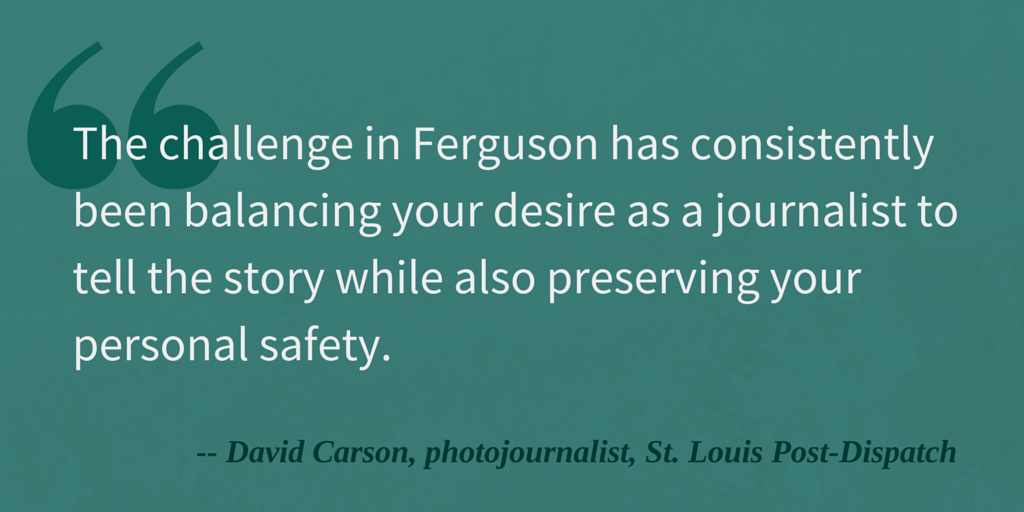When St. Louis Post-Dispatch photojournalist David Carson ran into reporter Paul Hampel last night in Ferguson, Missouri, the two agreed that something felt off on West Florissant Avenue as the anniversary of Michael Brown’s death drew to a close.
“We both agreed that it was the best time to put on our vests at that point,” Carson said.
They put their bullet-proof vests on, but they weren’t working together and went their separate ways. A few hours later, Carson heard that Hampel had been beaten up. Carson found Hampel and went with him through the police line. Then the shooting started. When it stopped, Carson helped Hampel call his wife.
“Paul has zero memory of us interacting at all last night,” Carson said.
Here is an update on my friend @phampel, spoke w/ him he's doing ok, was assaulted in Ferguson http://t.co/0Gvp2R8PPJ pic.twitter.com/FdUfsqdNRs
— David Carson (@PDPJ) August 10, 2015
On Monday, Kim Bell wrote about Hampel’s assault for the Post-Dispatch.
Hampel said he was taking photos and videos of break-ins along West Florissant Avenue shortly before he was attacked. Suddenly, he said, he was rushed from behind.
“I got swarmed, beaten down really bad,” he said.
The attackers punched him in the face, hit him in the head at least three times and kicked him in the back of the head when he was on the ground, Hampel said.
Hampel was still in the hospital on Monday, said Gilbert Bailon, the Post-Dispatch’s editor. Carson spoke with Hampel and said he’s going to be fine. On Monday afternoon, the Post-Dispatch reported that a state of emergency had been called in Ferguson.
The feeling overall, Bailon said, is “here we are again with a lot of uncertainty.”
There was violence in Ferguson last year, Bailon said, but “it wasn’t as much rapid gunfire. Last night was really chaotic because no one really knew what was going on.”
Safety advice from the newsroom includes trying to work in pairs, at least within eyesight of a partner and regularly staying in touch both with other people in the field and with people in the office.
Twitter helps editors have an idea of where journalists are and where the police and other media are. This year, Post-Dispatch journalists also have backpacks ready with water and battery chargers to keep their phones alive.
“I guess there is a feeling that we need to be prepared for whatever happens tonight,” Bailon said.
Hampel had safety gear on, but “it didn’t stop him from being blindsided from behind,” Bailon said. “Even with that, it’s still extremely dangerous.”
And it feels pretty familiar to the newsroom.
Nearly one year ago, Carson was attacked while covering rioting in Ferguson.
On Monday, he said the biggest challenge was covering the story and staying safe in an environment that’s unpredictable.
“The challenge in Ferguson has consistently been balancing your desire as a journalist to tell the story while also preserving your personal safety,” Carson said. “It’s a fine line at times. But it’s unusual having to weigh those decisions regularly so close to home.”








